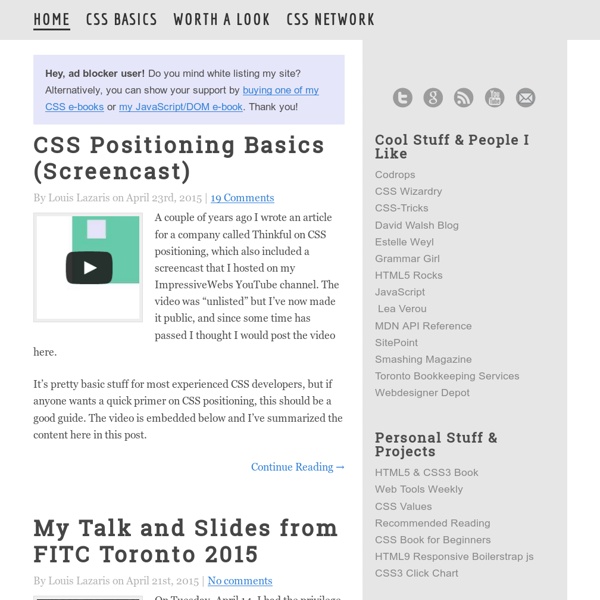



CatsWhoCode.com So, you’ve spent some time building your e-commerce brand. You’re making a handful of sales each month, but it’s not taking off the way you hoped it would. You do a little digging into your analytics and you learn people who spend 20 minutes on your site almost always buy something. Being faster and more efficient is the goal of all web designers and developers. According to Statista, the global mobile payment revenue is expected to reach over 1 trillion US dollars in 2019. In the world of today, having a website is a must. Node.js is an open-source, cross-platform JavaScript run-time environment that executes JavaScript code server-side. Since the Internet is around, affiliate marketing has always been one of the most efficient ways to make money online by promoting third-party products. WordPress is an excellent choice of platform for those wanting to start a new blog.
LoremPicsum Skills for Front-End Developers As a front-end developer, I’m constantly trying to learn new skills and technologies and adding to what I already know. Front-end developer job postings, however, vary from posting to posting so the list of different languages, libraries, and technologies that could theoretically fall under the category of front-end developer skills is quite large. Here’s a list (that I’ll continue to update) containing a wide variety of skills and technologies that I think all front-end developers should be working on learning, at least to some extent. The list is not necessarily in any particular order, but I tried to keep the more rudimentary stuff at or near the top. I may eventually turn this post into an extended list divided into categories plus links to articles and tutorials where these subjects can be learned or mastered — but for now you’ll just have to trust your Google searching abilities if you want to learn more on any of these. Please Contribute Advertise Here Leave a Reply
CSS tricks - Design Blog by Matthew James Taylor CSS tricks Lots of neat CSS tricks and tutorials that I use and recommend The Floating Boxes CSS Layout An alternative website design to the standard 'fixed width' or 'liquid layout' designs Blog tags © Copyright 1993 - 2010 Matthew James Taylor unless otherwise noted. Donnez du style à vos listes d'éléments Modifier ou designer les puces des éléments de liste n'est pas forcément un exercice de tout repos : nous avons souvent recours aux images de fond bien que d'autres techniques, plus simples à maintenir, mais moins connues, existent. Faisons le tour des méthodes utilisables aujourd'hui, avec leurs avantages et inconvénients. Viens découvrir mon <li> Que savons-nous exactement de l'élément <li> ? Sa fonction, selon les spécifications HTML, est de structurer un élément d'une liste ordonnée (dont l'ordre est pertinent) ou non ordonnée (dont l'ordre importe peu). Son parent direct est soit un élément <ul> (liste non ordonnée), soit un <ol> (liste ordonnée), et réciproquement les <ul> et <ol> ne peuvent contenir directement que des éléments <li> (pas de conteneur intermédiaire). En terme d'affichage - donc de rendu CSS par défaut - les éléments <li> ressemblent fortement à des éléments de type block tout en bénéficiant de particularités. Les caractéristiques des éléments list-item sont :
HTML5 | Le site officiel du livre aux éditions Eyrolles Code Snippets Best of Webdesign - by Jonathan Path & Cyril Genet Jam API CSS Block vs Inline - CSS Made Simple HTML elements can be displayed either in block or inline style. The difference between these is one of the most basic things you need to know in order to use CSS effectively. If you’d like to master CSS, here are the books I’d recommend! <a href=" The 3 ways that HTML elements can be displayed All HTML elements are naturally displayed in one of the following ways: Block example <p> tags and <div> tags are naturally displayed block-style. (I say “naturally” because you can override the display style by setting the CSS display property e.g. display:inline;.) A block-display element will span the full width of the space available to it, and so will start on a new line in the flow of HTML. Here I’ve started a paragraph and now I’m going to insert a <div> new div inside my paragraph and then continue the text here… See how the <div> jumped in and took over the full width of the space? Common HTML elements that are naturally block-display include: Inline example Examples